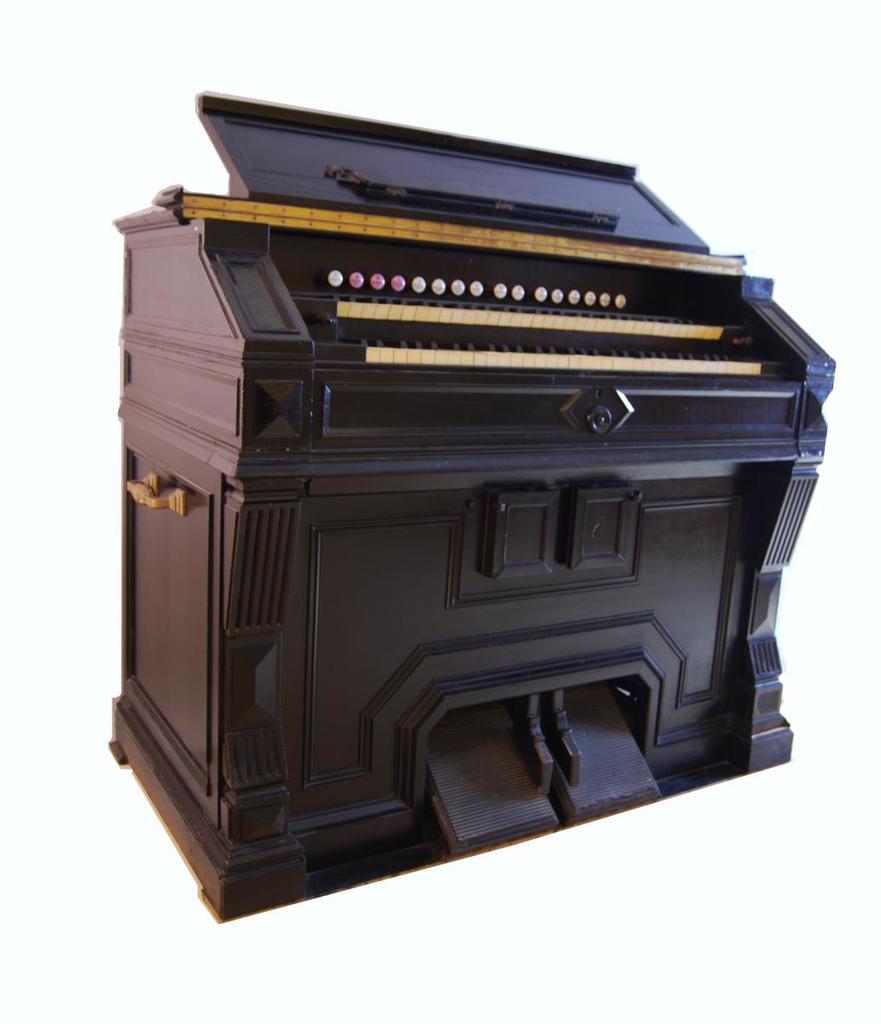
|
Reconstrucció virtual: L'instrument no està restaurat ni pot sonar. Les mostres es van obtenir fent sonar les notes en condicions, i extrapolant dades on fou necessari. Es tracta doncs d'una aproximació amb sons parcialment reals que ens pot donar una idea del que seria aquest instrument si estigués en condicions.
L'harmònium és un instrument de llengüeta lliure, amb teclat, que es va fer molt popular durant l'època romàntica i va perdurar fins a la segona meitat del segle XX, tant a les esglésies com en la música profana. Se'n fabricaven de grans i de petits, amb registres i sense, per cobrir la gran diversitat de públics i situacions en què es tocava. La casa Mustel, fundada el 1835 a París, en va ser una de les més importants. L'harmònium Mustel del Museu de la Música consta de dos teclats, amb seixanta-una tecles cadascun, i presenta setze registres per modificar el timbre de l'instrument. Va arribar al Museu el 2013, donat per un particular. |
Virtual reconstruction: The instrument is not restored and cannot be played. The samples were obtained by playing the notes in good condition, and extrapolating data where necessary. It is therefore an approximation with partially real sounds that can give us an idea of what this instrument would be like if it were in good condition.
The harmonium is a free-reed instrument with a keyboard, which became very popular during the Romantic era and lasted until the second half of the 20th century, both in churches and in secular music. They were made in large and small sizes, with and without registers, to cover the great diversity of audiences and situations in which it was played. The Mustel house, founded in 1835 in Paris, was one of the most important. The Mustel harmonium in the Musée de la Música consists of two keyboards, with sixty-one keys each, and has sixteen registers to modify the timbre of the instrument. It arrived at the Museum in 2013, donated by a private individual. |
